 We (Edith Hope Fine and Judith Josephson) are the Grammar Patrol. Both of us taught for years and are now writers, with thirty plus books between us, including our two popular grammar guides, Nitty-Gritty Grammar and More Nitty-Gritty Grammar. For close to twenty years, we taught writing and grammar basics and now we blog about grammar for writers.
We (Edith Hope Fine and Judith Josephson) are the Grammar Patrol. Both of us taught for years and are now writers, with thirty plus books between us, including our two popular grammar guides, Nitty-Gritty Grammar and More Nitty-Gritty Grammar. For close to twenty years, we taught writing and grammar basics and now we blog about grammar for writers.
Readers’ attention wanders when your words lack variety.
The key? Vary the form. Vary the length.
Does this ring familiar?
Dick sat down.
Jane played ball.
Spot ran fast.
The repeated noun-verb, three-word form works fine for beginning readers. But if a paragraph you’ve written sounds clunky when read aloud, check for same-length sentences. When doing editing work, we’ve seen paragraphs where each sentence has seven words. It took us a while to figure out why the paragraph didn’t sing even though there was nothing wrong with the writing itself. Excite your readers by changing up sentence length.
The other key? Vary your sentence formations.

When we taught middle school English, we handed out sets of cards in different colors—the noun cards were blue, verbs were green, prepositional phrases were yellow, and so on. We could ask for sentences starting with prepositional phrases and the students would shuffle their cards to create their own unique combinations. This hands-on activity fully engaged the young writers. Much laughter often ensued.
Starting Points:
Noun-Verb
There’s nothing inherently wrong with a subject followed by a verb:
• Esther Williams swam beautifully.
Just check to see if the noun-verb form dominates your page. It’s an easy problem to fix.
Clause
Clauses have both a subject and a predicate. An independent clause can stand alone as a simple sentence:
• Puck leapt off the back of the stage.
Dependent clauses rely on the rest of a sentence to make sense. These clauses have a subject and a predicate, but they don’t form complete sentences and they don’t make sense on their own:
• when Harry met Sally
• because she loves ice skating
• that shone on the mountain
• since we lost the game
• then bounced up using a hidden trampoline
Combine an independent clause with a dependent clause or a dependent clause with an independent clause and you’re in business:
• Puck leapt off the back of the stage, then bounced up using a hidden trampoline.
• Since we lost the game, playoff dreams are doomed.
Phrase
There are five kinds of phrases, but all you need to know is that a phrase lacks a subject/predicate combo and is never a complete sentence.
• raced for class (participial phrase)
• from morning on (prepositional phrase)
• walking the dog (gerund phrase)
• his temporary filling (noun phrase)
• to infinity and beyond (infinitive phrase)
When editing your own work, bear sentence length and form in mind. Aim for variety in your writing to keep your readers interested in what you’re saying.
For more on grammar specifics, consult our zany grammar guides, Nitty-Gritty Grammar: A Not-So-Serious Guide to Clear Communication and More Nitty-Gritty Grammar: Another Not-So-Serious Guide to Clear Communication.
Key image credit: ID 24790186 © Ayzek09 | Dreamstime.com
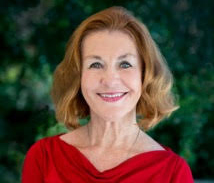 Judith Pinkerton Josephson loves to dig into the past. She believes that behind every person, every relationship, any major event, there lies a story or several stories. Her award-winning biographies, history books, and picture books include fiction and nonfiction for children. She has also co-written funny grammar books for adults. In this column, she blogs about the reissue as an e-book of her previously published print book about the children in America who grew up during World War II.
Judith Pinkerton Josephson loves to dig into the past. She believes that behind every person, every relationship, any major event, there lies a story or several stories. Her award-winning biographies, history books, and picture books include fiction and nonfiction for children. She has also co-written funny grammar books for adults. In this column, she blogs about the reissue as an e-book of her previously published print book about the children in America who grew up during World War II.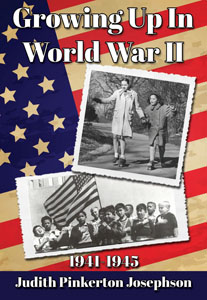 War affects children, no matter where or when in the world it’s waged or what countries are involved. Sometimes it leads young people to serve and do extraordinary things, as it did our late president George H.W. Bush, who served in WWII. Young people, faced with the possible loss of those they loved, did their best to help out at home. They collected scrap metal, saved money to buy war bonds, planted Victory Gardens, and learned to do without things like sugar, butter, new shoes, and bicycles. Teenagers lied about their age and joined the military. Children saw their mothers enter the work force, doing jobs usually held by men. “We Can Do It” urged Rosie the Riveter. Posters and slogans urged people to unite behind the effort. For my newly revised and reissued book Growing up in World War II (eFrog Press), I talked with people who were children then. Not surprisingly, their memories spilled out, vivid and lasting. I collected stories of what life was like for them.
War affects children, no matter where or when in the world it’s waged or what countries are involved. Sometimes it leads young people to serve and do extraordinary things, as it did our late president George H.W. Bush, who served in WWII. Young people, faced with the possible loss of those they loved, did their best to help out at home. They collected scrap metal, saved money to buy war bonds, planted Victory Gardens, and learned to do without things like sugar, butter, new shoes, and bicycles. Teenagers lied about their age and joined the military. Children saw their mothers enter the work force, doing jobs usually held by men. “We Can Do It” urged Rosie the Riveter. Posters and slogans urged people to unite behind the effort. For my newly revised and reissued book Growing up in World War II (eFrog Press), I talked with people who were children then. Not surprisingly, their memories spilled out, vivid and lasting. I collected stories of what life was like for them.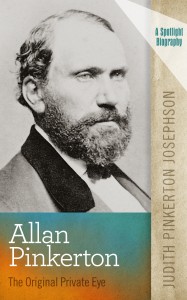

 Richard Fitchen, BA MA MLIS PhD, was a firefighter and National Guardsman before teaching at the University of Washington and the University of California (Berkeley and Santa Barbara). He served as the social sciences bibliographer in Yale University’s Libraries and retired as bibliographer and reference department head at the Stanford University Libraries. He now writes full time and enjoys traveling with family.
Richard Fitchen, BA MA MLIS PhD, was a firefighter and National Guardsman before teaching at the University of Washington and the University of California (Berkeley and Santa Barbara). He served as the social sciences bibliographer in Yale University’s Libraries and retired as bibliographer and reference department head at the Stanford University Libraries. He now writes full time and enjoys traveling with family.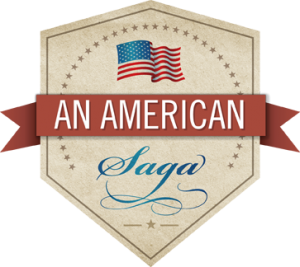
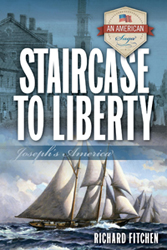 In the first book,
In the first book, 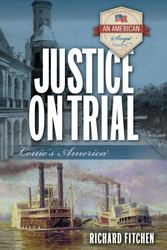 In the second book,
In the second book, 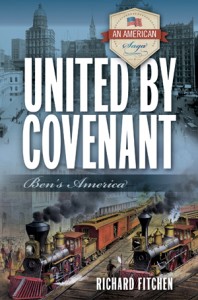 Book three,
Book three, 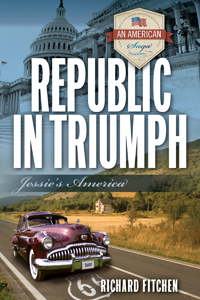 The fourth book,
The fourth book, 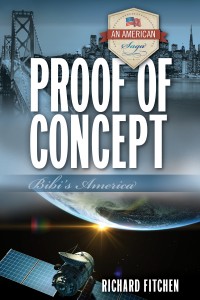 The fifth and final book,
The fifth and final book, 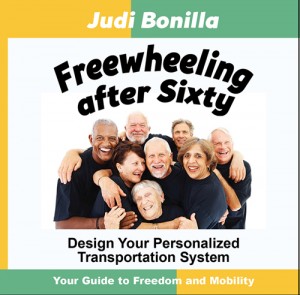 Did you really say banish the keys talk? Why yes I did because “Let me talk to my parents about giving up driving,” said no one ever!
Did you really say banish the keys talk? Why yes I did because “Let me talk to my parents about giving up driving,” said no one ever! Currently,
Currently, 
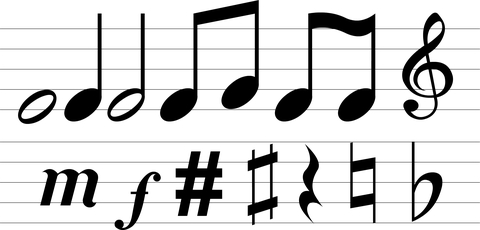
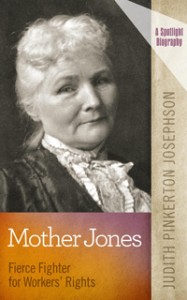 Happy Mother’s Day to all the mothers out there, as well as those who mother and mentor young people—aunts, grandmothers, friends, teachers, youth leaders, coaches! One Mother’s Day, my daughter gave me a paperback book, Important Women of the Twentieth Century. It held a section on Mother Jones, a.k.a. Mary Harris Jones, which inspired me to write one of my most intriguing biographies for young people. For the next several months, Mother Jones figuratively stomped around my office in her long black dress, hat, and boots, looking over my shoulder to make sure I captured her spirit and tenacity.
Happy Mother’s Day to all the mothers out there, as well as those who mother and mentor young people—aunts, grandmothers, friends, teachers, youth leaders, coaches! One Mother’s Day, my daughter gave me a paperback book, Important Women of the Twentieth Century. It held a section on Mother Jones, a.k.a. Mary Harris Jones, which inspired me to write one of my most intriguing biographies for young people. For the next several months, Mother Jones figuratively stomped around my office in her long black dress, hat, and boots, looking over my shoulder to make sure I captured her spirit and tenacity.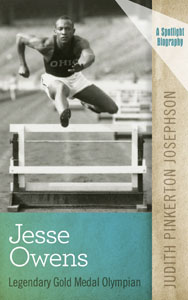
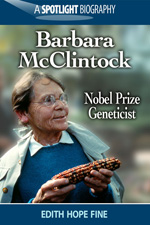
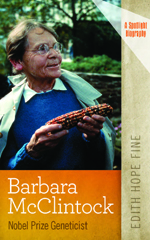
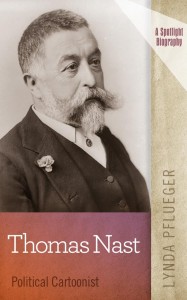
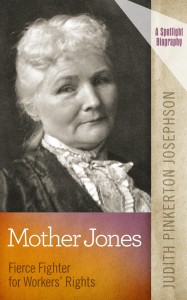
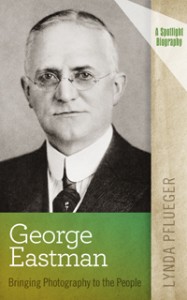
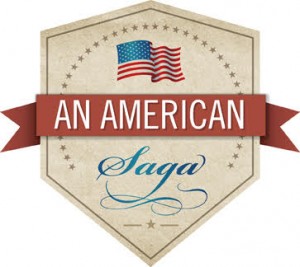



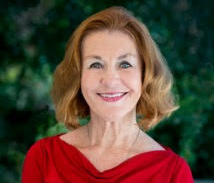 Judith Pinkerton Josephson has taught at various grade levels, and has written books for children—biographies, picture books, and childhood history books—and co-written two zany grammar guides for adults. She believes that behind every person and every relationship, there lies a story. Capturing the essence of that story in the space and time it took place makes writing fascinating. Visit her
Judith Pinkerton Josephson has taught at various grade levels, and has written books for children—biographies, picture books, and childhood history books—and co-written two zany grammar guides for adults. She believes that behind every person and every relationship, there lies a story. Capturing the essence of that story in the space and time it took place makes writing fascinating. Visit her 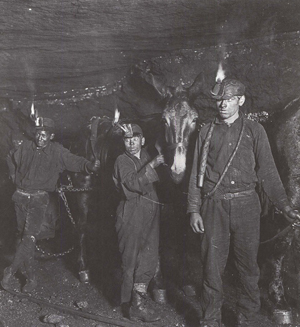
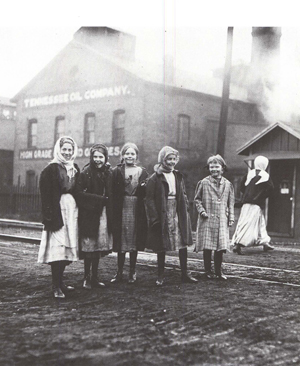

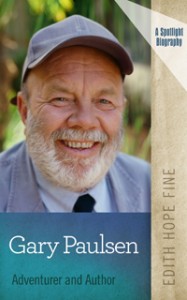

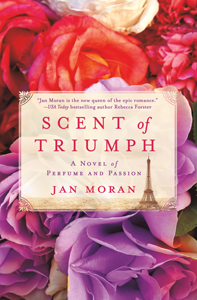
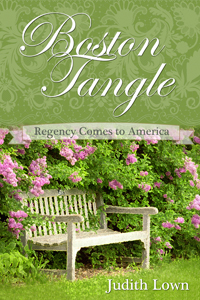 In her newest title, Boston Tangle: Regency Comes to America, Lown transports three of her English characters from previous books to Boston where they interact with the upper class and, of course, there is a love story—a tangled tale. Lown’s heroine Drusilla Fortesque is a lady who knows her own mind and Lown laces her writing with wry wit and avoids sappiness. Heyer would be proud.
In her newest title, Boston Tangle: Regency Comes to America, Lown transports three of her English characters from previous books to Boston where they interact with the upper class and, of course, there is a love story—a tangled tale. Lown’s heroine Drusilla Fortesque is a lady who knows her own mind and Lown laces her writing with wry wit and avoids sappiness. Heyer would be proud.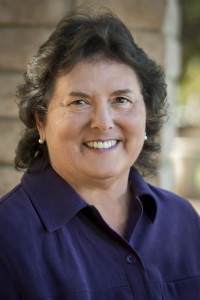 Lynda Pflueger has written nine biographies for children. Her books have been favorably reviewed by Kirkus, School and Library Journal, and Booklist.
Lynda Pflueger has written nine biographies for children. Her books have been favorably reviewed by Kirkus, School and Library Journal, and Booklist. 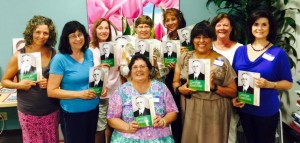
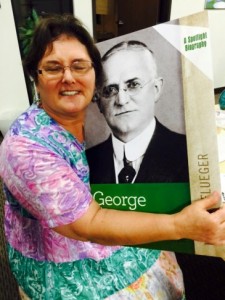 What fun! I loved talking about one of my favorite people, George Eastman, the founder of Kodak.
What fun! I loved talking about one of my favorite people, George Eastman, the founder of Kodak.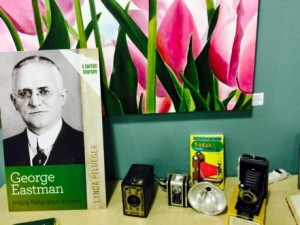 I knew his adventures in Africa would appeal to young people (grades 5 and up), my target reading audience. In 1926, a year after he retired from Eastman Kodak, Eastman packed his bags and set out for Africa. He stayed with Osa and Martin Johnson, two wild life photographers at their campsite in the Kedong Valley near Nairobi. His cabin was built alongside an elephant trail and several times a day, the large animals passed by, giving Eastman an opportunity to photograph them. I read a passage that showed what an interesting person Eastman was.
I knew his adventures in Africa would appeal to young people (grades 5 and up), my target reading audience. In 1926, a year after he retired from Eastman Kodak, Eastman packed his bags and set out for Africa. He stayed with Osa and Martin Johnson, two wild life photographers at their campsite in the Kedong Valley near Nairobi. His cabin was built alongside an elephant trail and several times a day, the large animals passed by, giving Eastman an opportunity to photograph them. I read a passage that showed what an interesting person Eastman was.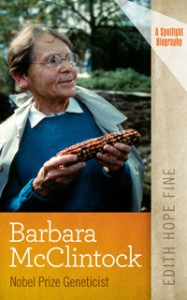 All these biographies have been previously published as print books, many in the 1990s, and the authors retained the ebook rights. They were excited to update these titles, many out of print, and tap into the power of the Internet. Each book has a section titled “Digging Deeper” where authors link to a few selected sites. For our very first title,
All these biographies have been previously published as print books, many in the 1990s, and the authors retained the ebook rights. They were excited to update these titles, many out of print, and tap into the power of the Internet. Each book has a section titled “Digging Deeper” where authors link to a few selected sites. For our very first title, 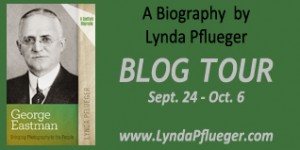
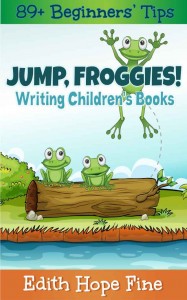

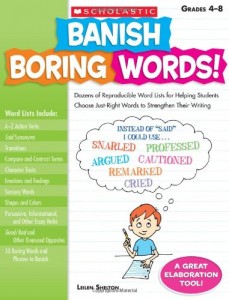 After looking over my choices, I determined I needed five reference books on my desk:
After looking over my choices, I determined I needed five reference books on my desk:  Sometimes you just need a beautifully written book at hand to inspire your own prose. For a while, that book was
Sometimes you just need a beautifully written book at hand to inspire your own prose. For a while, that book was 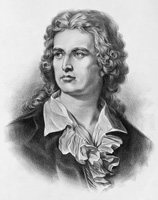 Since I founded eFrog Press almost four years ago, I have worked with dozens of authors and am always intrigued by their individual writing processes. No two authors seem to have the same process. I think writers have more rituals than major league baseball pitchers although there is less scratching and spitting involved.
Since I founded eFrog Press almost four years ago, I have worked with dozens of authors and am always intrigued by their individual writing processes. No two authors seem to have the same process. I think writers have more rituals than major league baseball pitchers although there is less scratching and spitting involved. Metaphors are figures of speech that compare, making two very different things seem the same. Think “is” for metaphor, even though the two ideas can’t be compared literally.
Metaphors are figures of speech that compare, making two very different things seem the same. Think “is” for metaphor, even though the two ideas can’t be compared literally.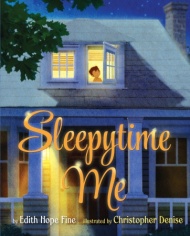 Onomatopoeia is all about sounds—words that echo real-life sounds. Straight from the Greek word onomatopoeia, it means “words that reflect meaning in their sounds.”
Onomatopoeia is all about sounds—words that echo real-life sounds. Straight from the Greek word onomatopoeia, it means “words that reflect meaning in their sounds.”

 Are you a morning person or does your imagination come alive as the sun goes down? Choose the best time slot available in your schedule and block out at least two hours per week for writing. The two hours does not include getting up to boil water for tea, updating Facebook (even if it’s your author page), or bathroom breaks. You must be seated and producing text for 120 minutes—preferably consecutive minutes.
Are you a morning person or does your imagination come alive as the sun goes down? Choose the best time slot available in your schedule and block out at least two hours per week for writing. The two hours does not include getting up to boil water for tea, updating Facebook (even if it’s your author page), or bathroom breaks. You must be seated and producing text for 120 minutes—preferably consecutive minutes.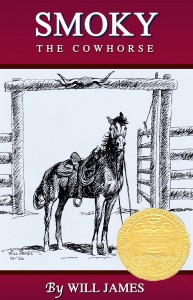 This children’s classic, and winner of the 1927 Newbery Medal for children’s literature, is the unforgettable story of a horse—from his first hours on the prairie sod to his final years out to pasture. Smoky grows up wild, strong, and wise to the ways of the range, fighting wolves and braving stiff winds. Clint, a bronco-busting cowboy on the Rocking R Ranch, thinks the spirited animal is the finest little horse he ever saw. After many adventurous years with Clint on the Rocking R, Smoky mysteriously disappears, only to turn up later as an outlaw bucking horse on the rodeo circuit.
This children’s classic, and winner of the 1927 Newbery Medal for children’s literature, is the unforgettable story of a horse—from his first hours on the prairie sod to his final years out to pasture. Smoky grows up wild, strong, and wise to the ways of the range, fighting wolves and braving stiff winds. Clint, a bronco-busting cowboy on the Rocking R Ranch, thinks the spirited animal is the finest little horse he ever saw. After many adventurous years with Clint on the Rocking R, Smoky mysteriously disappears, only to turn up later as an outlaw bucking horse on the rodeo circuit.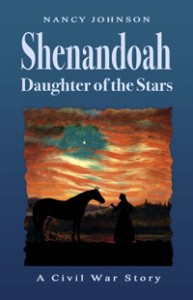 During the turbulent years of the Civil War, three young people struggle to follow their dreams as the war devastates their homeland and their way of life in the Shenandoah Valley of Virginia in this final installment of Johnson’s Civil War trilogy.
During the turbulent years of the Civil War, three young people struggle to follow their dreams as the war devastates their homeland and their way of life in the Shenandoah Valley of Virginia in this final installment of Johnson’s Civil War trilogy.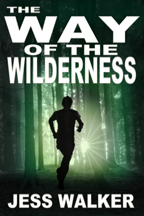 Sam West thought he knew what it was like to feel alone in the world. He has been abandoned by his mother, neglected by his alcoholic father, and ignored by every foster parent he was sent to. At fifteen, Sam decides to find his mother in search of a future with the woman he barely remembers. But when his bush plane crashes in Northern Ontario, Canada, a vast expanse of untamed wilderness, Sam is the sole survivor and utterly alone.
Sam West thought he knew what it was like to feel alone in the world. He has been abandoned by his mother, neglected by his alcoholic father, and ignored by every foster parent he was sent to. At fifteen, Sam decides to find his mother in search of a future with the woman he barely remembers. But when his bush plane crashes in Northern Ontario, Canada, a vast expanse of untamed wilderness, Sam is the sole survivor and utterly alone.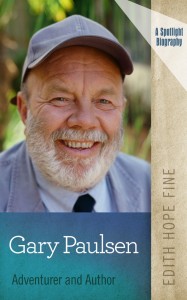 With more than two hundred books to his credit, Gary Paulsen is fast becoming an American legend. A popular children’s author, Paulsen draws on life experiences to write mystery, memoir, adventure, humor, and survival, including the best-selling Hatchet. He has run the Iditarod, survived violent sea storms, picked crops, worked at carnivals, been blown off a mountain, plunged through lake ice in the dead of winter, and had his pants catch fire while training his dogs. The result is books people love to read.
With more than two hundred books to his credit, Gary Paulsen is fast becoming an American legend. A popular children’s author, Paulsen draws on life experiences to write mystery, memoir, adventure, humor, and survival, including the best-selling Hatchet. He has run the Iditarod, survived violent sea storms, picked crops, worked at carnivals, been blown off a mountain, plunged through lake ice in the dead of winter, and had his pants catch fire while training his dogs. The result is books people love to read.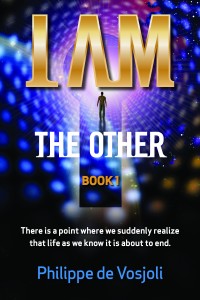
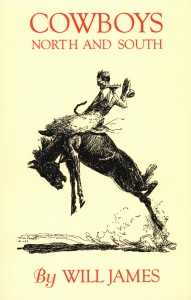
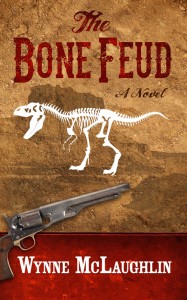
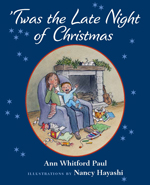

 Wynne McLaughlin is a video game designer, screenwriter, and television writer. He is a member of the Writer’s Guild of America, west and the International Game Developers Association. His first novel, “
Wynne McLaughlin is a video game designer, screenwriter, and television writer. He is a member of the Writer’s Guild of America, west and the International Game Developers Association. His first novel, “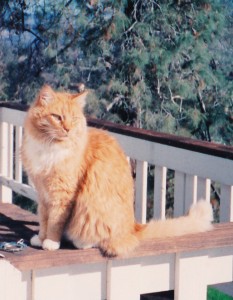 As I was sitting at my computer thinking about this, our cat leaped up onto my lap. He was an older cat, an orange tabby that had been with my wife for over a decade before I met her. He was the star of a hundred stories my wife had told me over the years. Garvey had the most adventuresome spirit of any animal I’d ever met. If only he could talk.
As I was sitting at my computer thinking about this, our cat leaped up onto my lap. He was an older cat, an orange tabby that had been with my wife for over a decade before I met her. He was the star of a hundred stories my wife had told me over the years. Garvey had the most adventuresome spirit of any animal I’d ever met. If only he could talk.
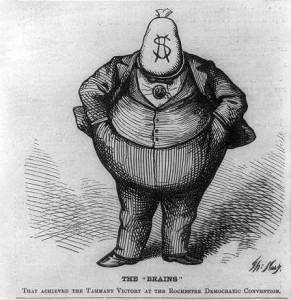 I was intrigued by Nast’s story. After the Civil War, with only his pen as a weapon, he helped bring down a notoriously corrupt group of politicians called the Tweed Ring in New York City. Nast continually harassed the ring with his drawings and often focused his attention on William M. Tweed, the leader of the ring. In one drawing entitled “Brains” Nast drew Tweed dressed in a three-piece business suit and replaced his head with a money bag to signify the money he had stolen from the city.
I was intrigued by Nast’s story. After the Civil War, with only his pen as a weapon, he helped bring down a notoriously corrupt group of politicians called the Tweed Ring in New York City. Nast continually harassed the ring with his drawings and often focused his attention on William M. Tweed, the leader of the ring. In one drawing entitled “Brains” Nast drew Tweed dressed in a three-piece business suit and replaced his head with a money bag to signify the money he had stolen from the city.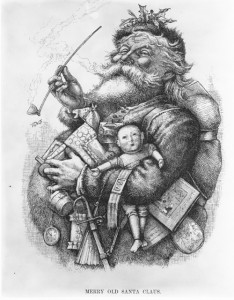 I also fell in love with Nast’s drawings of Santa Claus inspired by Clement Moore’s poem, “A Visit from St. Nicholas.” Nast portrayed Santa Claus as a jolly old fellow with a white beard and round belly.
I also fell in love with Nast’s drawings of Santa Claus inspired by Clement Moore’s poem, “A Visit from St. Nicholas.” Nast portrayed Santa Claus as a jolly old fellow with a white beard and round belly.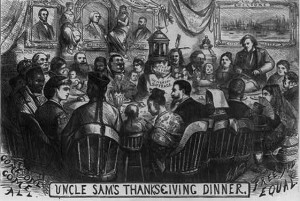

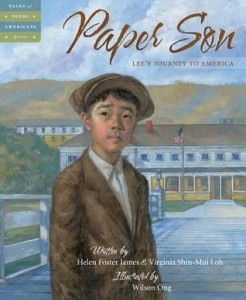
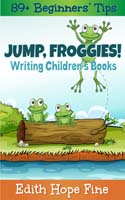
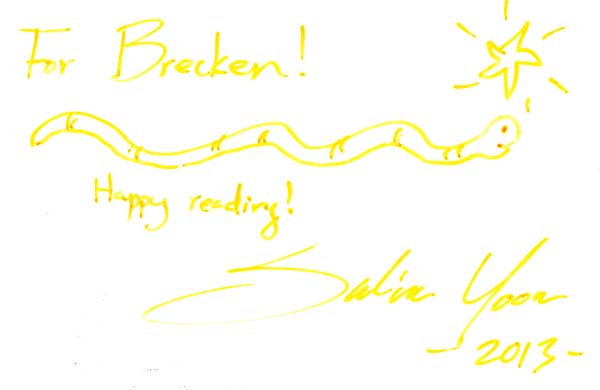
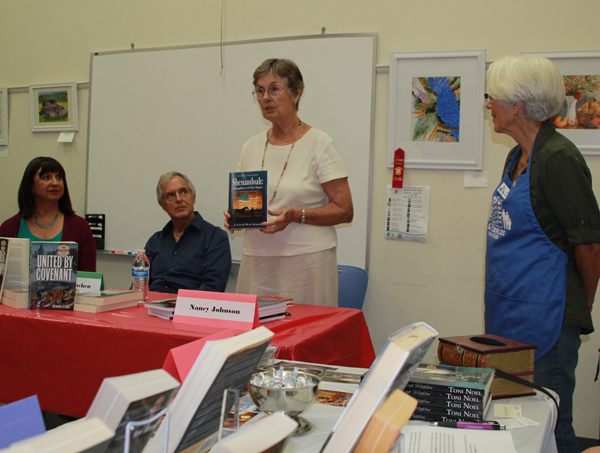
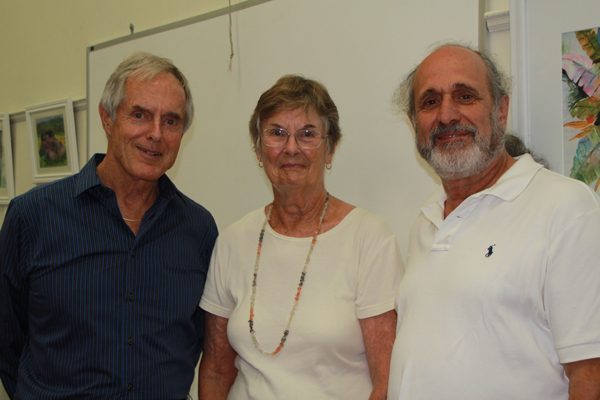
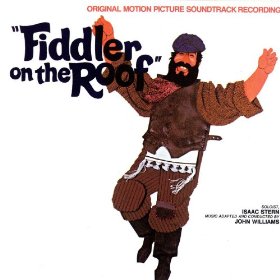

 Have you always wanted to write a book to establish yourself as an authority in your field? Let eFrog Press help you get started. The Writers’ Workshop on August 16 in Carlsbad, California, is geared to meet the needs of writers of all levels of experience. In the morning session we will focus on simple, powerful techniques to improve your writing. See
Have you always wanted to write a book to establish yourself as an authority in your field? Let eFrog Press help you get started. The Writers’ Workshop on August 16 in Carlsbad, California, is geared to meet the needs of writers of all levels of experience. In the morning session we will focus on simple, powerful techniques to improve your writing. See
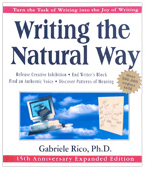 In 1983 she published
In 1983 she published 

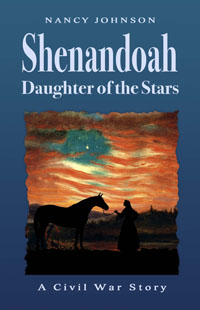 They especially need to know that young people also gave their lives in the struggle, as shown in her third book, Shenandoah: Daughter of the Stars (ebook $3.99; paperback $9.95). The Battle of New Market, which took place on May 15, 1864, in Virginia’s Shenandoah Valley, was notable for the participation of nearly 250 military cadets—the youngest only age 15.
They especially need to know that young people also gave their lives in the struggle, as shown in her third book, Shenandoah: Daughter of the Stars (ebook $3.99; paperback $9.95). The Battle of New Market, which took place on May 15, 1864, in Virginia’s Shenandoah Valley, was notable for the participation of nearly 250 military cadets—the youngest only age 15. Judith Josephson loves to dig into the past and is fascinated by people’s lives. A former teacher, Judith Josephson has written stories, columns, and articles for children. Her award-winning biographies and history books include both nonfiction and fiction for children. Jesse Owens: Legendary Olympian is her most recent title.
Judith Josephson loves to dig into the past and is fascinated by people’s lives. A former teacher, Judith Josephson has written stories, columns, and articles for children. Her award-winning biographies and history books include both nonfiction and fiction for children. Jesse Owens: Legendary Olympian is her most recent title.
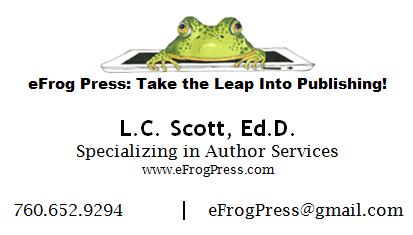
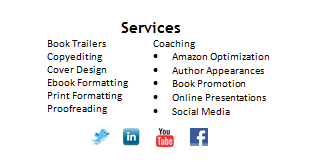
 Julia Larson is a freelance copywriter and copyeditor. When she’s not on a quadrilateral device, she’s on her yoga mat, a hike, or a cooking spree.
Julia Larson is a freelance copywriter and copyeditor. When she’s not on a quadrilateral device, she’s on her yoga mat, a hike, or a cooking spree.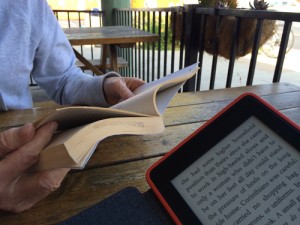
 On April 26, National Pretzel Day, we can say this:
On April 26, National Pretzel Day, we can say this: The Unknown Reader blogs monthly about all things ebook. Naturally, she has strong opinions about her reading material and her ereading devices. Currently, she is partial to her Kindle Paperwhite. We met with the Unknown Reader to capture a portrait of her in front of a mosaic in Solana Beach, CA, doing what she does best–reading! Naturally, she is a voracious reader and today she shares the latest study from the Pew Research Internet Project on the increase in ereading devices–one of the Unknown Reader’s favorite things!
The Unknown Reader blogs monthly about all things ebook. Naturally, she has strong opinions about her reading material and her ereading devices. Currently, she is partial to her Kindle Paperwhite. We met with the Unknown Reader to capture a portrait of her in front of a mosaic in Solana Beach, CA, doing what she does best–reading! Naturally, she is a voracious reader and today she shares the latest study from the Pew Research Internet Project on the increase in ereading devices–one of the Unknown Reader’s favorite things! From September 2013 to January 2014, adults with tablets went from 34% to 42%, and adults with ereaders went from 24% to 32%.
From September 2013 to January 2014, adults with tablets went from 34% to 42%, and adults with ereaders went from 24% to 32%.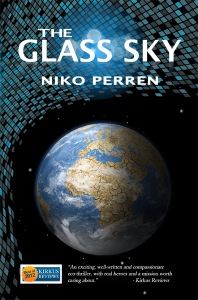 The story follows two main characters: Tania Black, an American scientist who’s unexpectedly thrown into a dangerous job as the UN’s Chief Biospherist, and Tian Jie, a Chinese engineer who might know how to obstruct the intensifying sunlight — and buy Earth time to clean up its act. While Tania battles political schemes and scrambles to grassroots organize, Jie hurries to develop the planet-saving shield technology.
The story follows two main characters: Tania Black, an American scientist who’s unexpectedly thrown into a dangerous job as the UN’s Chief Biospherist, and Tian Jie, a Chinese engineer who might know how to obstruct the intensifying sunlight — and buy Earth time to clean up its act. While Tania battles political schemes and scrambles to grassroots organize, Jie hurries to develop the planet-saving shield technology. Spring House Cleaning—Easy Mix-Ups
Spring House Cleaning—Easy Mix-Ups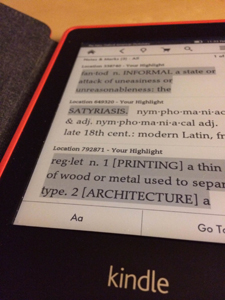 2. It’s interactive.
2. It’s interactive. Here’s a true tale told by a student from our days teaching a one-day grammar refresher through San Diego State University Extension. An English prof—engaging, funny, full of intriguing information—frequently read aloud to his students. One day, introducing Robert Frost, he read, “ . . . Then for the house that is no more a house/But only a ‘be-lilaced’ cellar hole/. . .”
Here’s a true tale told by a student from our days teaching a one-day grammar refresher through San Diego State University Extension. An English prof—engaging, funny, full of intriguing information—frequently read aloud to his students. One day, introducing Robert Frost, he read, “ . . . Then for the house that is no more a house/But only a ‘be-lilaced’ cellar hole/. . .” Please Share
Please Share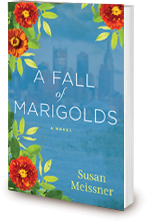 Authors can take a page from
Authors can take a page from 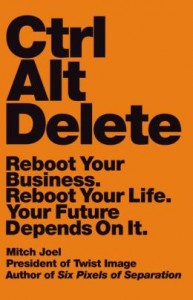
 Last week I spoke with an indie author just dipping her toe into social media. I read through her recent Tweets and was amazed by the back and forth with several of her followers. She was genuine, friendly, and enthusiastic as she connected with her new followers and began relationships with an agent and a well-established author. She was concerned that she did not have many followers yet, but I was dazzled by the quality of the relationships she was developing just by being herself in this new-to-her environment. Since mid-September she has over 800 tweets and 203 followers, but I expect her follower count to grow exponentially as people discover a writing teacher and indie author with something to say and a willingness to share. Curious? Check out
Last week I spoke with an indie author just dipping her toe into social media. I read through her recent Tweets and was amazed by the back and forth with several of her followers. She was genuine, friendly, and enthusiastic as she connected with her new followers and began relationships with an agent and a well-established author. She was concerned that she did not have many followers yet, but I was dazzled by the quality of the relationships she was developing just by being herself in this new-to-her environment. Since mid-September she has over 800 tweets and 203 followers, but I expect her follower count to grow exponentially as people discover a writing teacher and indie author with something to say and a willingness to share. Curious? Check out  It’s a brand new year, a good time to review how to write dates. Dates can bring about a comma conundrum.
It’s a brand new year, a good time to review how to write dates. Dates can bring about a comma conundrum.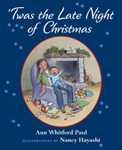
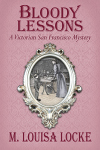


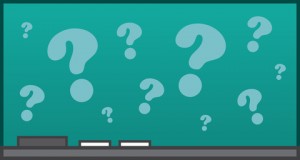

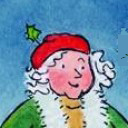 We are delighted to interview Mrs. Saint Nick as the holiday season approaches. She has some great advice for slowing down and enjoying this time of year. We also ask about the new gift book featuring her Christmas duties.
We are delighted to interview Mrs. Saint Nick as the holiday season approaches. She has some great advice for slowing down and enjoying this time of year. We also ask about the new gift book featuring her Christmas duties.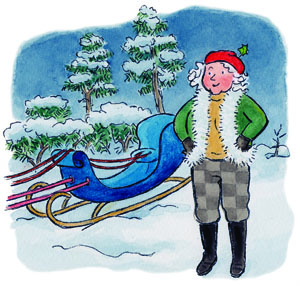 eFrog:
eFrog: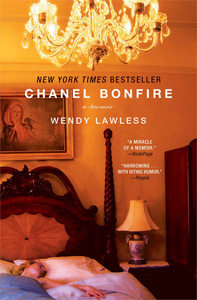 Looking for a reality check? Wendy Lawless’s life will give you one. Whether or not you were raised in a household as volatile as Lawless’s,
Looking for a reality check? Wendy Lawless’s life will give you one. Whether or not you were raised in a household as volatile as Lawless’s, 
 Susan L. Lipson, a middle-grade novelist who also happens to be our Forest Beat reporter, shares her recent interview (below) with Althea, a tree fairy with unique knowledge of the human lifestyle. Lipson was tipped off to the fairy’s whereabouts by 10-year-olds Sara and Jonathan, who shared their tale, The Secret in the Wood, with her. The kids accidentally met the displaced tree fairy when Althea regained consciousness after a long sleep on Sara’s wooden bedroom wall. In this interview, Lipson discusses with Althea the positive effects of the burgeoning ebook industry on forest dwellers like herself.
Susan L. Lipson, a middle-grade novelist who also happens to be our Forest Beat reporter, shares her recent interview (below) with Althea, a tree fairy with unique knowledge of the human lifestyle. Lipson was tipped off to the fairy’s whereabouts by 10-year-olds Sara and Jonathan, who shared their tale, The Secret in the Wood, with her. The kids accidentally met the displaced tree fairy when Althea regained consciousness after a long sleep on Sara’s wooden bedroom wall. In this interview, Lipson discusses with Althea the positive effects of the burgeoning ebook industry on forest dwellers like herself.

 Most remarkable is Paulsen’s ability to set different tones. From books like his rollicking Harris and Me, Liar Liar, Flat Broke, Crush, and Lawn Boy, to the phenomenally popular Newbery Honor Book Hatchet, from the searching Canyons to the poetic A Christmas Sonata, Paulsen’s books fly off the shelves.
Most remarkable is Paulsen’s ability to set different tones. From books like his rollicking Harris and Me, Liar Liar, Flat Broke, Crush, and Lawn Boy, to the phenomenally popular Newbery Honor Book Hatchet, from the searching Canyons to the poetic A Christmas Sonata, Paulsen’s books fly off the shelves. Judith Lown is the author of A Match for Lady Constance (Avalon) and A Sensible Lady: A Traditional Regency Romance (eFrog Press). She is hard at work on a sequel but still makes time to blog. Today she pays tribute to Georgette Heyer during the week of her birthday. Note that
Judith Lown is the author of A Match for Lady Constance (Avalon) and A Sensible Lady: A Traditional Regency Romance (eFrog Press). She is hard at work on a sequel but still makes time to blog. Today she pays tribute to Georgette Heyer during the week of her birthday. Note that 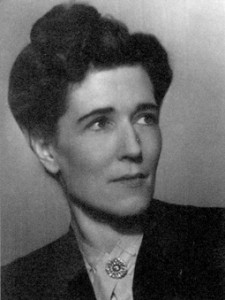 Georgette Heyer might not have been the first writer to use Incomparable to designate a lady whose beauty is sufficiently compelling to thaw the hearts of icy Lords, turn erstwhile warriors into babysitters, or, most importantly, transform notorious rakes into faithful, monogamous husbands. However, she can be credited with establishing the Incomparable as a fixture of the Regency Romance, just as she established the Regency as a staple among romance novels.
Georgette Heyer might not have been the first writer to use Incomparable to designate a lady whose beauty is sufficiently compelling to thaw the hearts of icy Lords, turn erstwhile warriors into babysitters, or, most importantly, transform notorious rakes into faithful, monogamous husbands. However, she can be credited with establishing the Incomparable as a fixture of the Regency Romance, just as she established the Regency as a staple among romance novels. Word mix-ups can flummox even people who work with words daily.
Word mix-ups can flummox even people who work with words daily.
 When my friend, Ruth, and I get together, usually at a table in Barnes & Noble, we talk about books and reading, teaching and writing, golf and poetry, and always about our families.
When my friend, Ruth, and I get together, usually at a table in Barnes & Noble, we talk about books and reading, teaching and writing, golf and poetry, and always about our families.
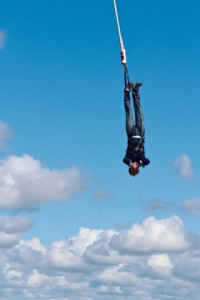 Isn’t dangling for earrings, bungee jumpers, or grapes on the vine?
Isn’t dangling for earrings, bungee jumpers, or grapes on the vine? Nancy Johnson is a retired school teacher and an active author. She envisioned a trilogy of books for children about the Civil War from different points of view: a Yankee drummer boy, an African-American soldier from Boston, and a VMI cadet and young people from the Shenandoah Valley of Virginia. As she explains on her website: “As a teacher I realized there was a need for historical fiction about the Civil War. I believe many of the issues which divided our country during the Civil War still touch us today.”
Nancy Johnson is a retired school teacher and an active author. She envisioned a trilogy of books for children about the Civil War from different points of view: a Yankee drummer boy, an African-American soldier from Boston, and a VMI cadet and young people from the Shenandoah Valley of Virginia. As she explains on her website: “As a teacher I realized there was a need for historical fiction about the Civil War. I believe many of the issues which divided our country during the Civil War still touch us today.”
 Mother kept their letters and pictures of the brothers and their little sister, Carrie, in a black box which was decorated with gold hearts and flowers. I was heartbroken when I learned that the youngest brother, George Peacock, had been killed in an ambush in Virginia while he was still a teenager.
Mother kept their letters and pictures of the brothers and their little sister, Carrie, in a black box which was decorated with gold hearts and flowers. I was heartbroken when I learned that the youngest brother, George Peacock, had been killed in an ambush in Virginia while he was still a teenager. As I passed through one of the back streets of Alexandria I saw a building 3 stories high built of brick with the sign Price Birch & Co Dealer in Slaves. It struck me as something different from anything I had ever seen before.
As I passed through one of the back streets of Alexandria I saw a building 3 stories high built of brick with the sign Price Birch & Co Dealer in Slaves. It struck me as something different from anything I had ever seen before. Take a moment to think of soothing music. In a symphony orchestra, some instruments, like second violins and bass violins, are workhorses. They do their jobs and follow the rules. But some all-stars take the spotlight. Oboes sound that pivotal “A” for tuning. Trumpets announce themselves. Ta-da!
Take a moment to think of soothing music. In a symphony orchestra, some instruments, like second violins and bass violins, are workhorses. They do their jobs and follow the rules. But some all-stars take the spotlight. Oboes sound that pivotal “A” for tuning. Trumpets announce themselves. Ta-da!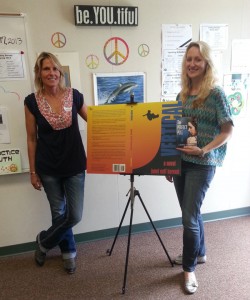
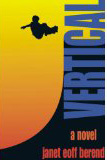
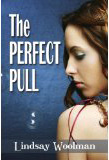 After showing the book trailer to great applause, students heard an engaging excerpt from
After showing the book trailer to great applause, students heard an engaging excerpt from 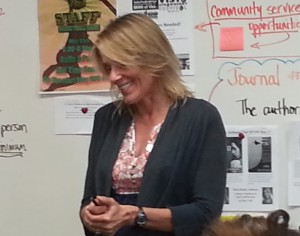
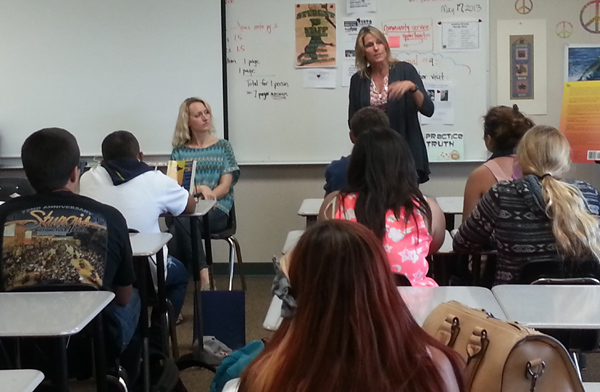
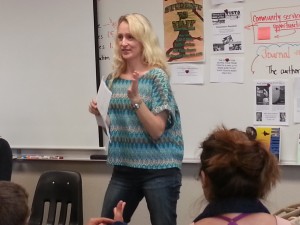
 The Grammar Patrol loves Frazz, the erudite cartoon strip by the Jef Mallett. In one, a student tells Frazz, the school custodian, “Violets are like flowers in the right place, and weeds in the wrong place. Like apostrophes!”
The Grammar Patrol loves Frazz, the erudite cartoon strip by the Jef Mallett. In one, a student tells Frazz, the school custodian, “Violets are like flowers in the right place, and weeds in the wrong place. Like apostrophes!” The same goes for the mailbox that says “The Smith’s.” That’s two bloopers in just one sign. First, “Smith” is singular. “Smiths” is plural—more than one Smith lives there. An apostrophe added correctly (as in “The Smiths’ ”) shows possession. But why use the possessive? The Smiths’ what? The Smiths’ mailbox? Keep it simple. The sign should read “The Smiths” as in “the Smiths live here.”
The same goes for the mailbox that says “The Smith’s.” That’s two bloopers in just one sign. First, “Smith” is singular. “Smiths” is plural—more than one Smith lives there. An apostrophe added correctly (as in “The Smiths’ ”) shows possession. But why use the possessive? The Smiths’ what? The Smiths’ mailbox? Keep it simple. The sign should read “The Smiths” as in “the Smiths live here.” That’s when Miss Hoezel, her English teacher, donned her blue grammar cape and flew to the rescue. As the Grammar Patrol, we’ve used her clever trick many times when teaching grammar basics. We call it the arrow method.
That’s when Miss Hoezel, her English teacher, donned her blue grammar cape and flew to the rescue. As the Grammar Patrol, we’ve used her clever trick many times when teaching grammar basics. We call it the arrow method.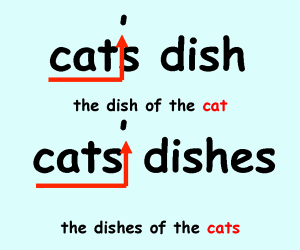
 Today S. Woffington shares her journey from reluctant history student to avid author of historical fiction. Her new novel, Unveiling, is available as an ebook and in print on Amazon. Unveiling is the story of Sara—a spirited, young Saudi woman—who is passionate about preserving and expressing her ancient heritage through her art. But this seemingly simple goal puts her at odds with her prominent family and the traditions of her heritage, which demand she veil her artist’s eyes. Forced to choose between her two greatest passions, Sara escapes to America, only to find that unveiling entails far more than the removal of a black piece of cloth. This act of defiance thrusts Sara into a perilous triangle involving family, government, and a relentless suitor. Only by finding the courage to unveil her own heart can she paint her destiny. To learn more about this new novel, view the book trailer.
Today S. Woffington shares her journey from reluctant history student to avid author of historical fiction. Her new novel, Unveiling, is available as an ebook and in print on Amazon. Unveiling is the story of Sara—a spirited, young Saudi woman—who is passionate about preserving and expressing her ancient heritage through her art. But this seemingly simple goal puts her at odds with her prominent family and the traditions of her heritage, which demand she veil her artist’s eyes. Forced to choose between her two greatest passions, Sara escapes to America, only to find that unveiling entails far more than the removal of a black piece of cloth. This act of defiance thrusts Sara into a perilous triangle involving family, government, and a relentless suitor. Only by finding the courage to unveil her own heart can she paint her destiny. To learn more about this new novel, view the book trailer.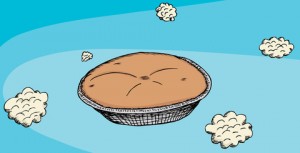
 Pamela M. Kircher, MD, is a childhood Near-Death Experiencer as well as a Hospice Physician. For over 20 years, she has worked with people with NDEs and spoken internationally about the profound effects that mystical experiences and being with the dying have on our daily lives and how we live those lives. In this updated version of Love is the Link: A hospice doctor shares her experience of near-death and dying, she shares how the fields of NDEs and the hospice movement have evolved since the original version of the book. She also reflects on how her own NDE continues to influence her life. Hew newly updated book is now available as an ebook and can be
Pamela M. Kircher, MD, is a childhood Near-Death Experiencer as well as a Hospice Physician. For over 20 years, she has worked with people with NDEs and spoken internationally about the profound effects that mystical experiences and being with the dying have on our daily lives and how we live those lives. In this updated version of Love is the Link: A hospice doctor shares her experience of near-death and dying, she shares how the fields of NDEs and the hospice movement have evolved since the original version of the book. She also reflects on how her own NDE continues to influence her life. Hew newly updated book is now available as an ebook and can be 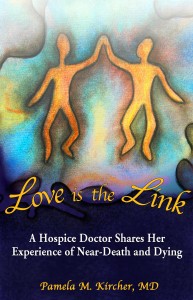 “A nurse had cared in the hospital for a terminally-ill adolescent for six months prior to the teenager’s death. One night at 2:35 a.m. the nurse awoke at home from a sound sleep and felt that the boy was standing next to her bed. She could see him very clearly and was surprised to see that he was wearing a new baseball cap. She asked him what he was doing in her room. The boy said that he had come to tell her that he was all right and that the nurse should hug his mother for him when she saw her in three months. The nurse then went back to sleep, thinking that she must have had a very vivid dream. She couldn’t shake the feeling the next morning, so she called the hospital to check on the boy. After a long pause, the other nurse told her that the boy had died unexpectedly at around 3 a.m.
“A nurse had cared in the hospital for a terminally-ill adolescent for six months prior to the teenager’s death. One night at 2:35 a.m. the nurse awoke at home from a sound sleep and felt that the boy was standing next to her bed. She could see him very clearly and was surprised to see that he was wearing a new baseball cap. She asked him what he was doing in her room. The boy said that he had come to tell her that he was all right and that the nurse should hug his mother for him when she saw her in three months. The nurse then went back to sleep, thinking that she must have had a very vivid dream. She couldn’t shake the feeling the next morning, so she called the hospital to check on the boy. After a long pause, the other nurse told her that the boy had died unexpectedly at around 3 a.m. The Unknown Reader will be reviewing ebooks. Naturally, she has strong opinions about her reading material. Over the holidays the Unknown Reader ventured West to San Diego so we took advantage of the opportunity to capture a portrait of her in front of a mosaic in Solana Beach, CA, doing what she does best–reading!
The Unknown Reader will be reviewing ebooks. Naturally, she has strong opinions about her reading material. Over the holidays the Unknown Reader ventured West to San Diego so we took advantage of the opportunity to capture a portrait of her in front of a mosaic in Solana Beach, CA, doing what she does best–reading! In Perfect Grammar Land, you’d hear, “Put out a BOLO for a blue station wagon, license ISPKGOOD.” We want you to put out a BOLO on agreement bloopers when prepositions pair with incorrect pronouns. Such errors abound, especially in speech and on TV and radio shows.
In Perfect Grammar Land, you’d hear, “Put out a BOLO for a blue station wagon, license ISPKGOOD.” We want you to put out a BOLO on agreement bloopers when prepositions pair with incorrect pronouns. Such errors abound, especially in speech and on TV and radio shows.
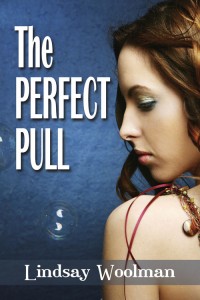 Every author has a different story of how their book was born. My “first born” (
Every author has a different story of how their book was born. My “first born” ( Roxyanne Young is a children’s author and
Roxyanne Young is a children’s author and 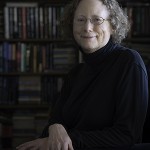
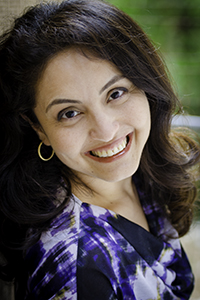 Wear something solid in a dark color–black or navy blue look good on most people, which is why you see them so often in portraits. Cream is also a good choice for most skin tones, but when you go to your portrait session, bring a couple of clothing options and discuss with your photographer which she thinks will look best on you.
Wear something solid in a dark color–black or navy blue look good on most people, which is why you see them so often in portraits. Cream is also a good choice for most skin tones, but when you go to your portrait session, bring a couple of clothing options and discuss with your photographer which she thinks will look best on you. ![katrin_black_200 In this portrait, Katrin has much more flattering lighting and she's wearing a plain black dress, so the viewer's focus is on her gorgeous eyes, not on what she's wearing]](http://www.efrogpress.com/wp-content/uploads/efrogblog_katrin_black_200.jpg) Better yet, have her take pictures in several outfits and then select your favorites from the proofs.
Better yet, have her take pictures in several outfits and then select your favorites from the proofs.
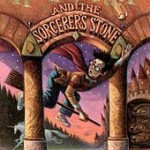 Let’s face it. Sometimes you just have to memorize the rules. If memorization isn’t your forte (and yes, we still say “fort,” but dink around on the Internet: the two-syllable “for-tay” is on the rise and no longer considered incorrect), we suggest consulting your favorite grammar book. Might we suggest our Nitty-Gritty Grammar or More Nitty-Gritty Grammar. (True confession: We both keep these grammar guides handy, especially for rules surrounding today’s topic.)
Let’s face it. Sometimes you just have to memorize the rules. If memorization isn’t your forte (and yes, we still say “fort,” but dink around on the Internet: the two-syllable “for-tay” is on the rise and no longer considered incorrect), we suggest consulting your favorite grammar book. Might we suggest our Nitty-Gritty Grammar or More Nitty-Gritty Grammar. (True confession: We both keep these grammar guides handy, especially for rules surrounding today’s topic.)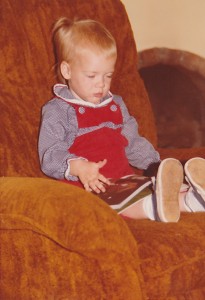 My two adult children love to read—my main claim to success as a mother. They grew up in a home surrounded by books and often opted to spend their birthday money on new volumes of their very own. I remember my daughter as a toddler “reading” with an adult and interrupting if a page were skipped. I knew I was raising another reader when my six-year-old son fell asleep in his bed curled around an open encyclopedia volume.
My two adult children love to read—my main claim to success as a mother. They grew up in a home surrounded by books and often opted to spend their birthday money on new volumes of their very own. I remember my daughter as a toddler “reading” with an adult and interrupting if a page were skipped. I knew I was raising another reader when my six-year-old son fell asleep in his bed curled around an open encyclopedia volume. The Unknown Reader shares pet peeves about formatting. Naturally, she has strong opinions about the format of any reading material. Over the holidays the Unknown Reader ventured West to San Diego so we took advantage of the opportunity to capture a portrait of her in front of a mosaic in Solana Beach, CA, doing what she does best–reading!
The Unknown Reader shares pet peeves about formatting. Naturally, she has strong opinions about the format of any reading material. Over the holidays the Unknown Reader ventured West to San Diego so we took advantage of the opportunity to capture a portrait of her in front of a mosaic in Solana Beach, CA, doing what she does best–reading!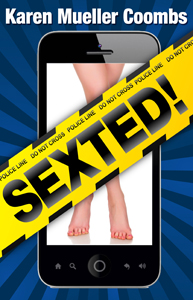
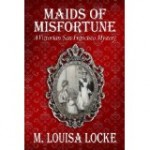
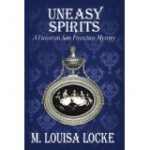
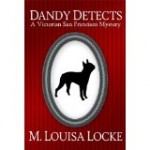
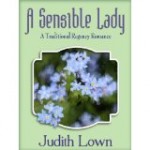
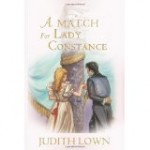
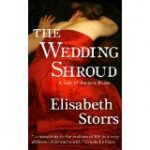
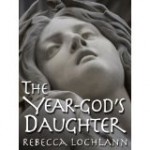
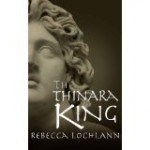
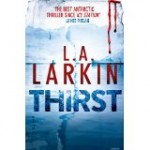
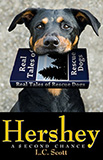 Hershey: A Second Chance
Hershey: A Second Chance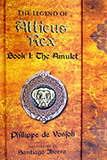 The Legend of Atticus Rex Book 1: The Amulet
The Legend of Atticus Rex Book 1: The Amulet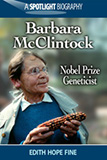
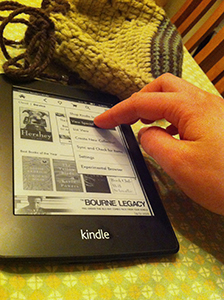 Only six weeks after awaking my Kindle Paperwhite from its shipping siesta, I simply can’t see myself ever going back to only paper-paged books. My first ereader has transported me to the ethereal land of e-ink, where I read quickly, quietly, and comfortably.
Only six weeks after awaking my Kindle Paperwhite from its shipping siesta, I simply can’t see myself ever going back to only paper-paged books. My first ereader has transported me to the ethereal land of e-ink, where I read quickly, quietly, and comfortably.
 Judith Lown is the author of A Match for Lady Constance (Avalon) and A Sensible Lady: A Traditional Regency Romance (eFrog Press). She is hard at work on a sequel but still makes time to blog.
Judith Lown is the author of A Match for Lady Constance (Avalon) and A Sensible Lady: A Traditional Regency Romance (eFrog Press). She is hard at work on a sequel but still makes time to blog.
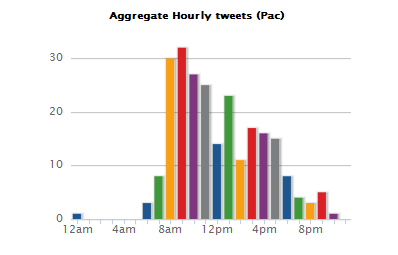
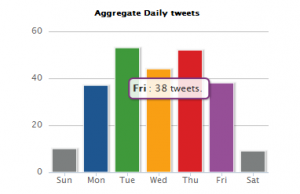 Take Your Measurements
Take Your Measurements


 Perhaps the most valuable service we offer at eFrog Press is copyediting and proofreading. Until you have worked with a professional copy editor, you have no idea how much value he or she can add to your book. Indie authors are often reluctant to spend money on editing. After all, their neighbor was an English major or their friend offered to edit their book for free. Sometimes you get what you pay for. Serious readers are offended by grammatical errors and typos.
Perhaps the most valuable service we offer at eFrog Press is copyediting and proofreading. Until you have worked with a professional copy editor, you have no idea how much value he or she can add to your book. Indie authors are often reluctant to spend money on editing. After all, their neighbor was an English major or their friend offered to edit their book for free. Sometimes you get what you pay for. Serious readers are offended by grammatical errors and typos. You need to pack a clear understanding of adverbs in your writer’s toolkit. Don’t use an adverb when a powerful verb can do the job. Bag adverbs completely? They do have their useful purpose, as in “The bobcat crept soundlessly toward the plump rabbit.”
You need to pack a clear understanding of adverbs in your writer’s toolkit. Don’t use an adverb when a powerful verb can do the job. Bag adverbs completely? They do have their useful purpose, as in “The bobcat crept soundlessly toward the plump rabbit.”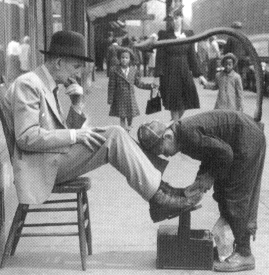 I had heard the story many times from my father. My father had come to America as a young boy. No matter how young, every immigrant family worked to survive. My father had worked shining shoes. When the school officials came to place him in school, his mother and father lied about his age to keep him out of school. So he worked to help support his family. In his spare time he would read until his father ripped the book from his hands and told him to get back to work. He continued to read, though, when ever he could, and taught himself to speak and write English well enough to get a job with Western Union. Years later he became the head of communications for the Commercial Bank of Italy and, after World War II, for Cities Service Oil Company. I always describe my father as a self-taught man.
I had heard the story many times from my father. My father had come to America as a young boy. No matter how young, every immigrant family worked to survive. My father had worked shining shoes. When the school officials came to place him in school, his mother and father lied about his age to keep him out of school. So he worked to help support his family. In his spare time he would read until his father ripped the book from his hands and told him to get back to work. He continued to read, though, when ever he could, and taught himself to speak and write English well enough to get a job with Western Union. Years later he became the head of communications for the Commercial Bank of Italy and, after World War II, for Cities Service Oil Company. I always describe my father as a self-taught man. I reached into the green-mesh bag of soccer balls for the game ball. Quickly I set aside two black-and white marked MeKasa soccer balls. These played well for practice, but I wanted the best ball for the game. Digging deeper into the bag, I rolled out two black-and-white MeKasas, yellowing from age. Shaking my head, I pulled out two Umbro soccer balls. Blue and red diamonds twisted around the balls. The hand stitching that bound them together spelled quality and pleased me. Grabbing one, I pressed in on it. Slightly under-inflated, this ball would flatten against the foot like a mushroom when kicked. Picking up the second Umbro, I pressed in on it, and, finding it firm, I tossed it to the referee.
I reached into the green-mesh bag of soccer balls for the game ball. Quickly I set aside two black-and white marked MeKasa soccer balls. These played well for practice, but I wanted the best ball for the game. Digging deeper into the bag, I rolled out two black-and-white MeKasas, yellowing from age. Shaking my head, I pulled out two Umbro soccer balls. Blue and red diamonds twisted around the balls. The hand stitching that bound them together spelled quality and pleased me. Grabbing one, I pressed in on it. Slightly under-inflated, this ball would flatten against the foot like a mushroom when kicked. Picking up the second Umbro, I pressed in on it, and, finding it firm, I tossed it to the referee. 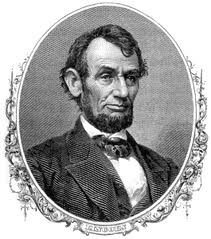 Writing with word processing software gives you more options than the old days of typewriters, but it also gives you gives you more ways to get into trouble. Most of us have twigged to the difference between the typewriter’s straight quotation marks and computer-generated curly ones. You’ll often hear the latter called curly quotes or smart quotes. If Honest Abe is reciting the Gettysburg address, the curly quotation that marks the beginning of his speech, should face the words—they’ll resemble the number 66: “Four score and seven years ago . . .” At the end of his speech, the marks form a 99: “shall not perish from the earth.”
Writing with word processing software gives you more options than the old days of typewriters, but it also gives you gives you more ways to get into trouble. Most of us have twigged to the difference between the typewriter’s straight quotation marks and computer-generated curly ones. You’ll often hear the latter called curly quotes or smart quotes. If Honest Abe is reciting the Gettysburg address, the curly quotation that marks the beginning of his speech, should face the words—they’ll resemble the number 66: “Four score and seven years ago . . .” At the end of his speech, the marks form a 99: “shall not perish from the earth.” After years of teaching writing, writing articles, editing, working with authors, and meeting in writing groups; I get it. Writing is a process. My former high school students would toss off one draft and be ready to turn it in. “I’m done!” they would announce.
After years of teaching writing, writing articles, editing, working with authors, and meeting in writing groups; I get it. Writing is a process. My former high school students would toss off one draft and be ready to turn it in. “I’m done!” they would announce. Twitter is an open and public social networking site that allows you to create a profile and share “tweets” with your readers and the world at large in short bursts (also known as 140 characters, or what’s called microblogging). Your followers are people who follow your Twitter feed to see what you post about. Likewise, you can follow others to see what they’re saying. Tweets from everyone you follow will show up on your main Twitter feed so it’s easy to read what’s going on.
Twitter is an open and public social networking site that allows you to create a profile and share “tweets” with your readers and the world at large in short bursts (also known as 140 characters, or what’s called microblogging). Your followers are people who follow your Twitter feed to see what you post about. Likewise, you can follow others to see what they’re saying. Tweets from everyone you follow will show up on your main Twitter feed so it’s easy to read what’s going on. Take the Leap welcomes monthly posts from The Unknown Reader. Her posts give writers a chance to learn how this avid reader uses her ereader. Today she shares preparations for yet another travel adventure.
Take the Leap welcomes monthly posts from The Unknown Reader. Her posts give writers a chance to learn how this avid reader uses her ereader. Today she shares preparations for yet another travel adventure.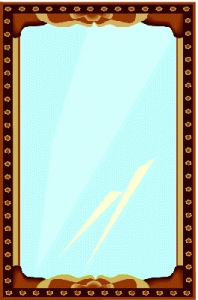
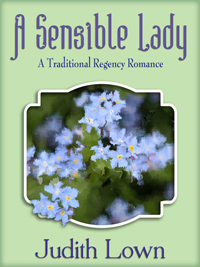





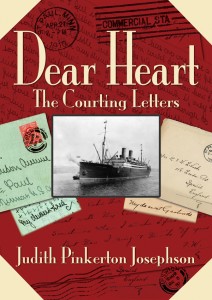 A trip to my mailbox these days might yield bills, ads, and the usual collection of junk mail. The sight of a handwritten letter nestled in the pile delights me. It was not always so. More than a century ago, letters and illustrated postcards were the main ways people communicated, be they friends, relations, or lovers. Phones were an expensive luxury.
A trip to my mailbox these days might yield bills, ads, and the usual collection of junk mail. The sight of a handwritten letter nestled in the pile delights me. It was not always so. More than a century ago, letters and illustrated postcards were the main ways people communicated, be they friends, relations, or lovers. Phones were an expensive luxury.